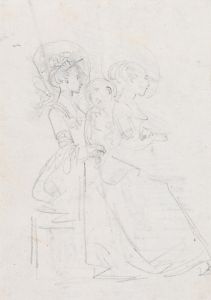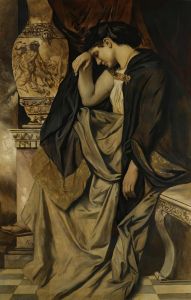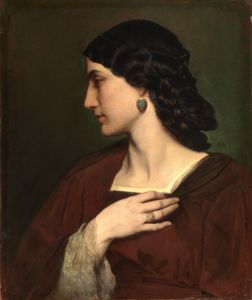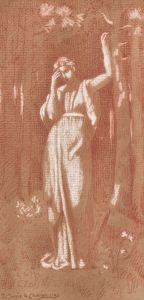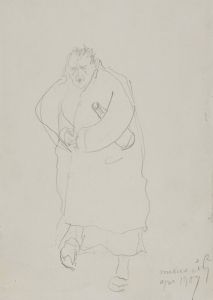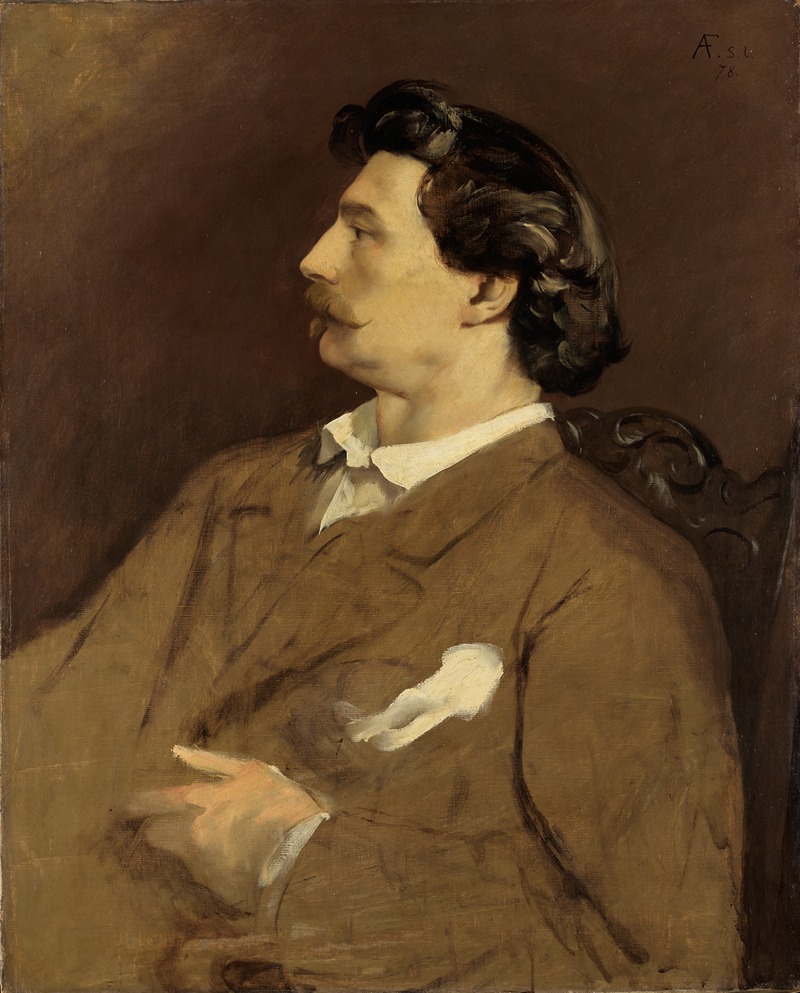
Selbstbildnis
A hand-painted replica of Anselm Feuerbach’s masterpiece Selbstbildnis, meticulously crafted by professional artists to capture the true essence of the original. Each piece is created with museum-quality canvas and rare mineral pigments, carefully painted by experienced artists with delicate brushstrokes and rich, layered colors to perfectly recreate the texture of the original artwork. Unlike machine-printed reproductions, this hand-painted version brings the painting to life, infused with the artist’s emotions and skill in every stroke. Whether for personal collection or home decoration, it instantly elevates the artistic atmosphere of any space.
Anselm Feuerbach, a prominent German painter of the 19th century, is renowned for his classical style and profound influence on the art world of his time. One of his notable works is "Selbstbildnis," which translates to "Self-Portrait." This painting is a significant piece within Feuerbach's oeuvre, reflecting both his artistic skill and his introspective nature.
Feuerbach was born on September 12, 1829, in Speyer, Germany, into a family with a strong intellectual background. His father, Joseph Anselm Feuerbach, was a well-known archaeologist, which likely influenced Anselm's interest in classical themes. Feuerbach studied at several prestigious art institutions, including the Düsseldorf Academy and the Munich Academy, before moving to Paris to study under Thomas Couture. His time in Paris exposed him to various artistic movements and honed his skills in portraiture and historical painting.
"Selbstbildnis" is one of several self-portraits Feuerbach created throughout his career, each offering a glimpse into his evolving self-perception and artistic style. This particular self-portrait is characterized by its classical composition and the artist's contemplative expression. Feuerbach's use of color and light in the painting demonstrates his mastery of the techniques he acquired during his studies and travels.
The painting reflects Feuerbach's admiration for the classical world, a recurring theme in his work. His self-portraits often convey a sense of introspection and melancholy, possibly reflecting his personal struggles and the challenges he faced in his career. Despite his talent, Feuerbach often felt underappreciated in the German art scene, which was dominated by more contemporary styles at the time.
Feuerbach's work, including "Selbstbildnis," was heavily influenced by his time in Italy, where he immersed himself in the study of Renaissance art. This influence is evident in the classical composition and the serene yet intense expression captured in the self-portrait. The painting's subdued palette and meticulous attention to detail are hallmarks of Feuerbach's style, emphasizing his dedication to the classical ideals of beauty and form.
Throughout his career, Feuerbach sought to revive the grandeur of classical art, often depicting mythological and historical subjects with a modern sensibility. His self-portraits, including "Selbstbildnis," serve as a testament to his commitment to these ideals and his desire to convey the timeless nature of human emotion and experience.
Anselm Feuerbach passed away on January 4, 1880, in Venice, Italy. Despite the challenges he faced during his lifetime, his work, including "Selbstbildnis," has left a lasting impact on the art world. Today, Feuerbach is celebrated as one of the leading figures of the German classical revival, and his self-portraits continue to be studied for their technical excellence and emotional depth.





